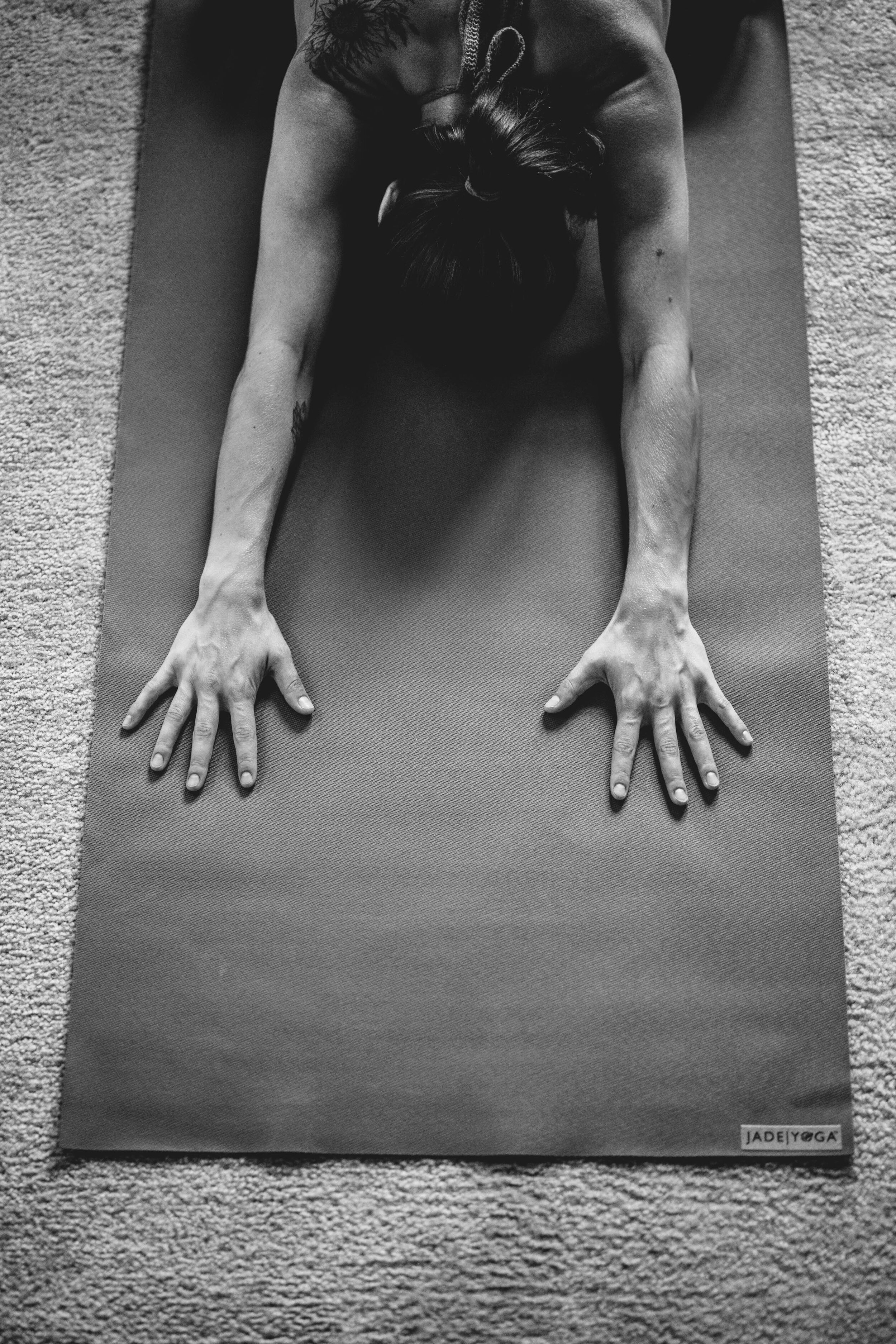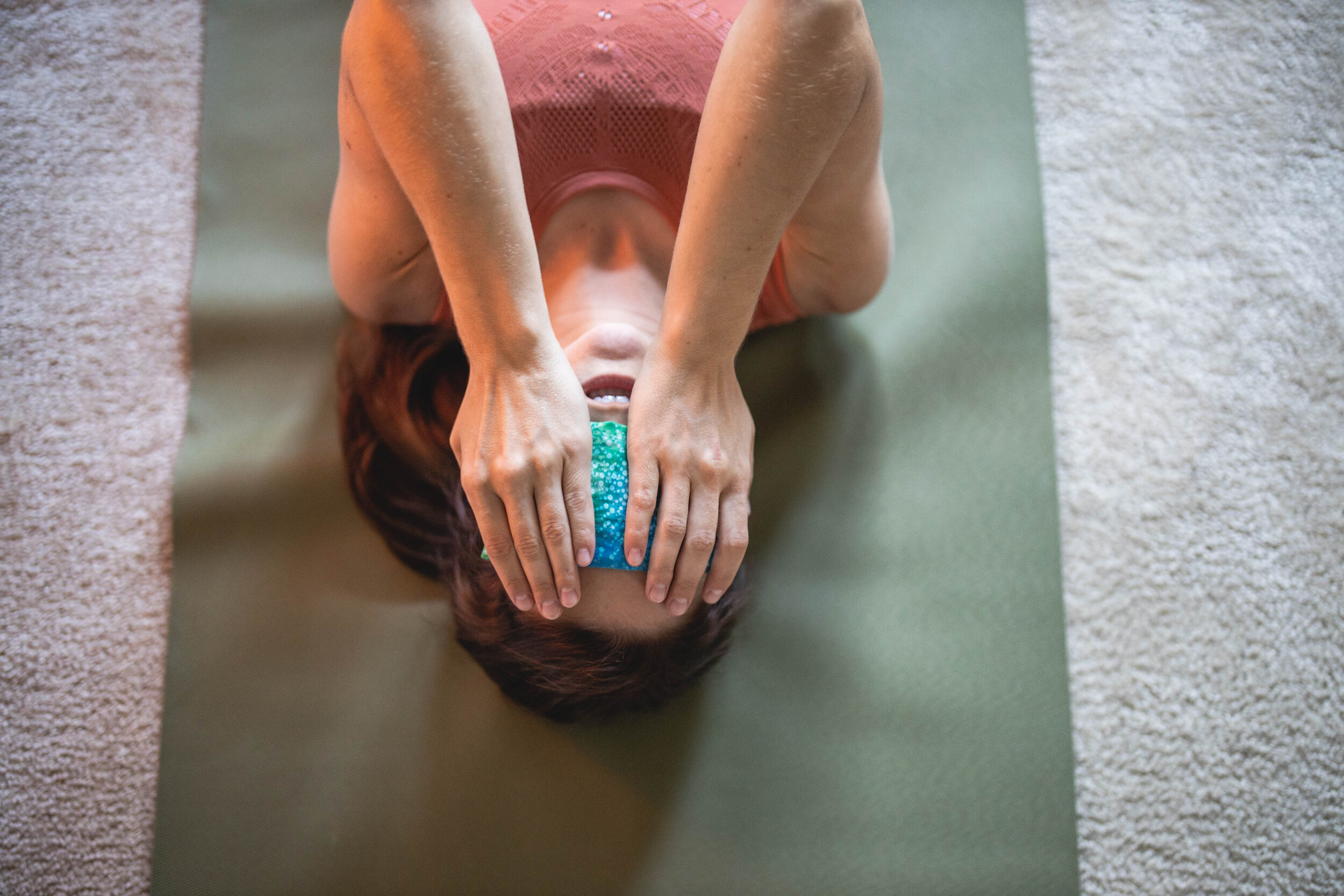5 Benefits of Restorative Yoga
As someone who struggles with anxiety, I tend to be a very go-go-go person, and find it hard to sit still. Restorative yoga wasn’t easy at first, but it brought me a practice of stillness, and a space to really allow my body to relax and find restoration.
After my injury in September, I was pushed towards shifting my practice into one that was mainly restorative poses. It was these restorative postures that allowed me to go deep into relaxation in a way I had never experienced before. In that depth of relaxation, I found healing both on a physical, mental, emotional, and spiritual level.
I want to tell you more about the actual benefits behind this deeply restful yoga style.
So what is restorative yoga?
In restorative yoga, the focus is not on stretching or strengthening, but in finding release. We release tension in the body and gently stimulate the organs through long hold postures designed to fully support and comfort the body. To reach this ultimate comfort, a combination of props can be used such as blankets, bolsters, blocks, pillows, sand bags, and eye pillows. Restorative yoga enhances our healing process as it helps us to regulate stress responses and re-balance the nervous system.
Benefits of Restorative Yoga
Relaxes your mind and body - Yoga is linked to reducing stress and anxiety, as well as lowering cortisol(stress hormone) levels.
Soothes the nervous system - Restorative helps you shift from “fight or flight” mode to relaxation mode.
Gentle on your body - Restorative yoga is generally safe and often recommended for those with injury or acute pain. Restorative yoga should fully support the body, providing maximum comfort.
Better Mood + Quality of Life - less stress=better mood. By reducing stress levels, yoga can help ease anxiety, depression, and other mood disorders by managing their symptoms.
Deepened Self Awareness + Mindfulness - By finding deep rest, you’re able to go inward, meditate, self-contemplate, and gain better understanding of outside experiences. This can aid in living more mindfully of others and of yourself.
Restorative Yoga + Our Nervous System - how it works
The practice helps us strengthen our connection with the Parasympathetic Nervous System. The Parasympathetic Nervous System is a branch of our Autonomic Nervous System, the system that controls involuntary functions in the body like our heart rate. When we are in states of stress, or what is often termed “fight or flight,” we are in an elevated Sympathetic state. In contrast, during periods of rest and recovery, we are in an elevated Parasympathetic state.
Stress is normal, and regular amount of stress are even healthy; like being nervous for a first date, or a test at school. However, when stress becomes chronic we start to experience imbalance in our body that can adversely affect our overall health with a range of problems like poor digestion, hormonal imbalances, fertility dysfunction, or disrupted sleep.
Restorative yoga can help us reconnect with our Parasympathetic Nervous System and strengthen our ability to move between states of stress and rest with more ease. By helping us learn to relax, restorative yoga can also reduce the production of stress hormones (cortisol and adrenaline), improve the function of our immune system, reduce muscle tension, help with insomnia, and so many other vital benefits.
Tips for Restorative Yoga
1) Find somewhere quiet. Loud or sudden noises may startle you, which can bring you out of relaxation and into a Sympathetic state.
2) Have layers or blankets to stay warm. As you relax deeper your body will start to cool down. It is very common to need more layers or blankets the longer you practice.
3) Use an eye pillow or a scarf to cover your eyes. Darkness can have a soothing effect. Dim the lighting in the room if you can.
4) Try experimenting with weight. Sometimes having added weight can help us feel safer. If you have a sandbag, you could try placing that over the heart, belly, or pelvis. You can also place a heavier folded blanket or weighted blanket on the body.
5) Set a timer. On average it takes 10-15 minutes to induce the relaxation response. Try starting with just a few poses at 10 minutes.





